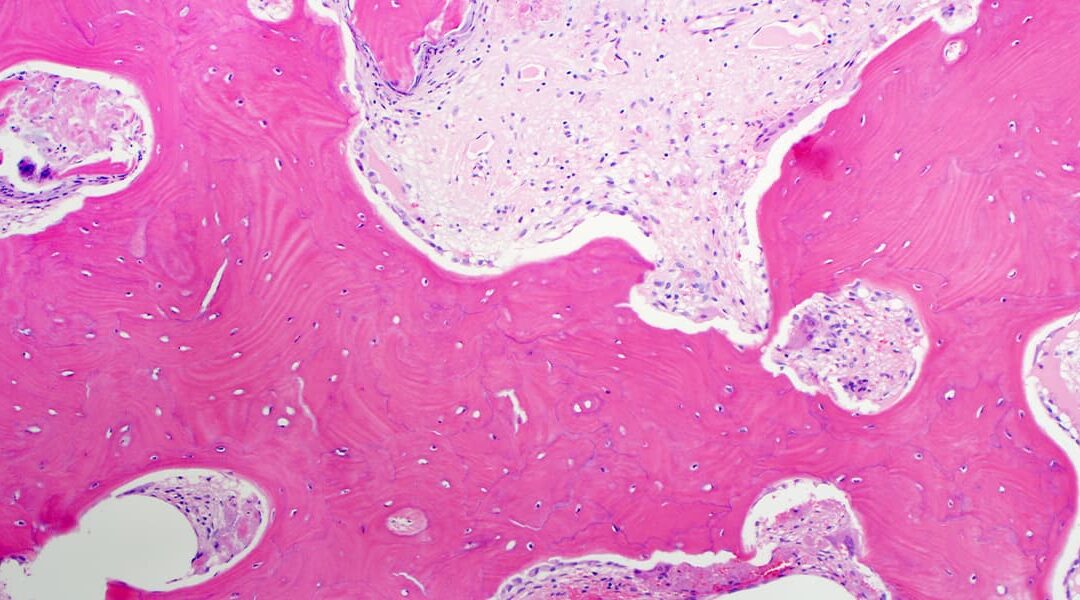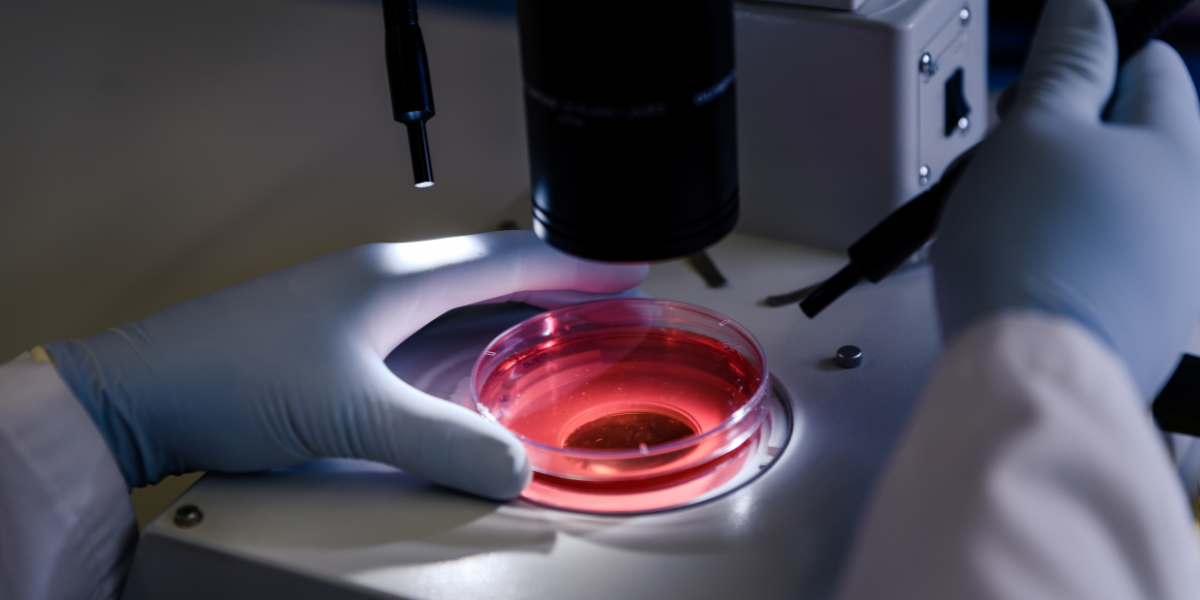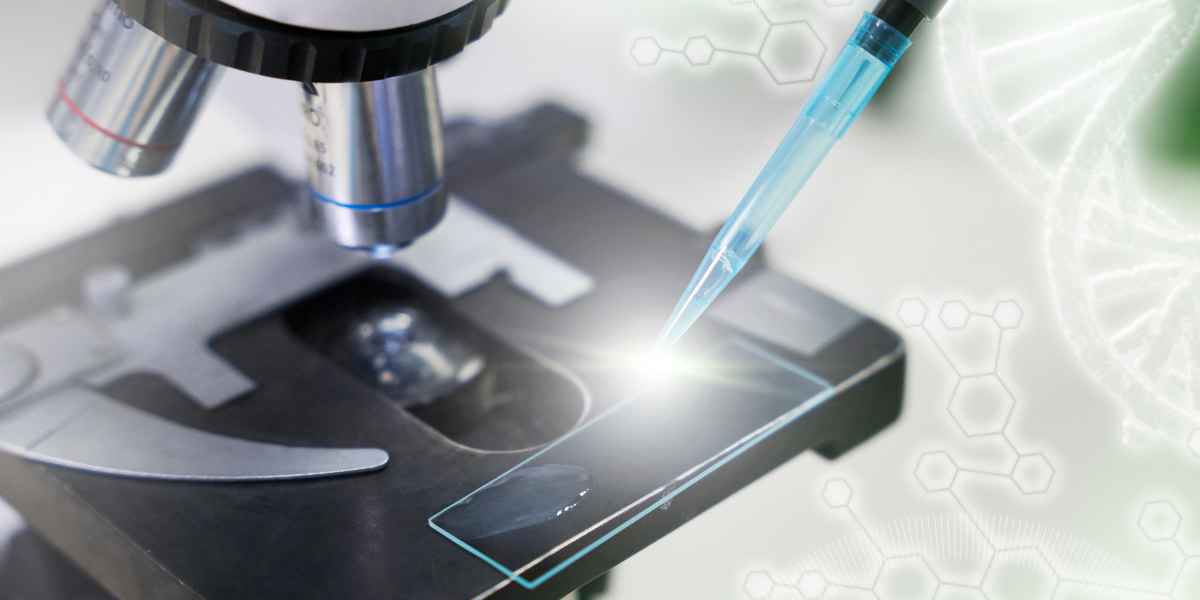Understanding the composition and structure of tissues is fundamental to the field of medicine. Histology, the microscopic study of tissues, plays a crucial role in diagnosing diseases and guiding treatment plans. If you find yourself wondering “What is histology?” this article will take you on a journey, exploring this science: its definitions, historical context, and the vital role it plays in medical diagnostics.
What is Histology?
Histology is the study of tissues at a microscopic level. It involves examining tissue samples to analyze their cellular composition, organization, and function.
This history of histology can be traced back to ancient Greece. Hippocrates, known as the Father of Medicine, first introduced the concept of “humors,” which he viewed as the four fluids within the body: blood, phlegm, yellow bile, and black bile.
He also introduced the concept of pathology, which involves the study of diseases in the body. In the 17th century, the invention of the microscope allowed scientists to observe cells and tissues at a microscopic level. This paved the way for the modern field of histology.
Today, histology is an essential component of medical diagnostics. Through various staining techniques and the use of light and electron microscopy, pathologists can examine tissues in detail and identify changes in appearance and structure of the tissue that may serve as indicators of disease.
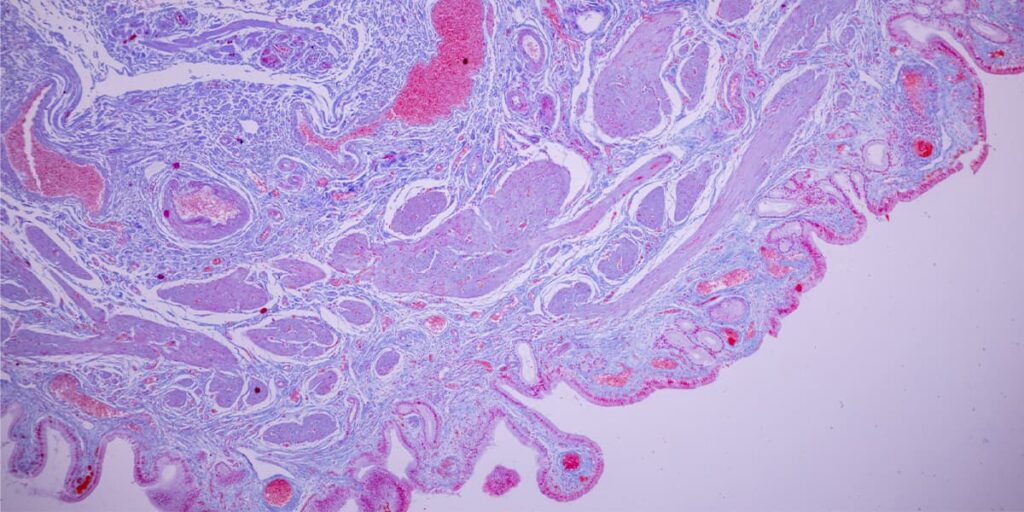
H&E staining helps the cells within the tissue stand out during examination.
Importance of Histology in Medical Diagnostics
Histology is essential for diagnosing diseases accurately. The process of identifying and diagnosing diseases often begins with obtaining tissue samples, usually through biopsies or surgical procedures.
These tissue samples are then sent to Histotechnicians, who employ specialized techniques to ensure the preservation of tissue integrity and prepare the samples for further analysis and examination. Techniques such as the use of formalin, a solution that preserves cell structures, the utilization of paraffin, a wax substance that embeds the tissue, and staining techniques to enhance cellular structures are employed to prepare the samples for further investigation.
One of the most used staining techniques for histology is Hematoxylin and Eosin staining (H&E staining). This technique stains cell nuclei blue-black and stains cytoplasm, extracellular matrix, and other structures pink.
After the tissue samples are processed, they are examined by pathologists. Pathologists are medical doctors who specialize in diagnosing disease by examining tissue samples obtained from biopsies or surgeries. They use their knowledge of medical science and specialized laboratory tests to examine the cells and make accurate diagnoses.
Histology is also fundamental to the diagnosis and treatment of cancer. Cancers are characterized by uncontrolled cellular growth. Histopathology, a branch of histology, is crucial in the diagnosis and staging of cancer. Pathologists examine tissue samples to determine the presence and extent of malignancy, enabling oncologists to tailor treatment plans for patients.
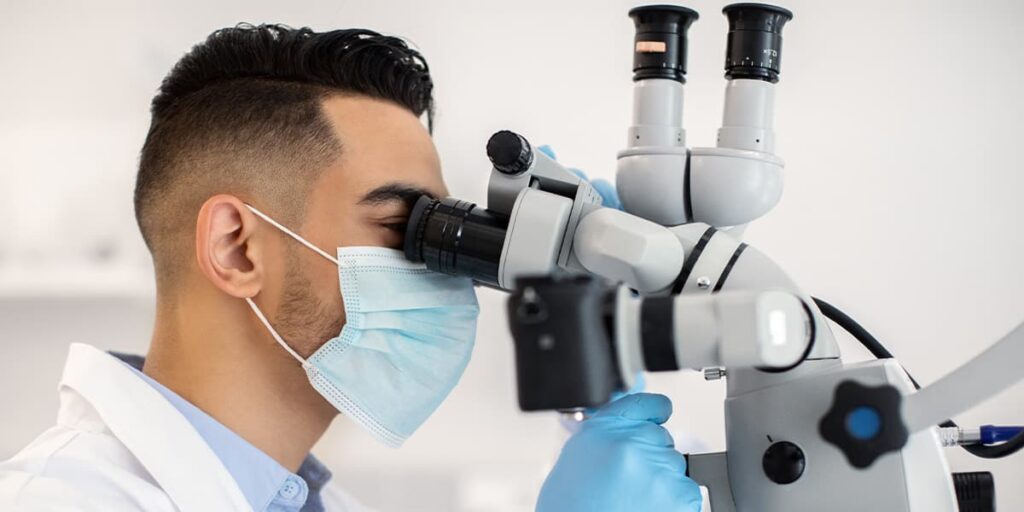
Once the samples are prepped and stained, they’re ready for examination under a microscope.
Applications of Histology
Histology is a vital component of medical research and advancement. Through a microscopic examination of tissues, researchers can identify significant changes in a tissue’s appearance and internal structure associated with diseases. These findings have been instrumental in developing new treatments and diagnostic techniques that have significantly improved patient outcomes. This study has led to advances in procedures such as kidney transplantation, treatment for liver cirrhosis, and cataract surgery.
Histology has also been used extensively in medical research. Scientists and researchers use histology to study tissues and how they function in a healthy state as well as what changes occur in cases of disease.
Histology Services at SBMF
Histology holds immense significance in medical diagnostics, providing crucial insights into tissue composition and guiding essential healthcare decisions. With its emphasis on accuracy and extensive knowledge, histology plays a critical role in precise diagnoses and understanding tissue composition. It significantly supports cancer treatment and advances personalized healthcare solutions. We encourage doctors to make the most of the outstanding histology services offered by SBMF, unlocking new possibilities in patient care.
We are an accredited medical foundation with state-of-the-art histology and cytology labs. We have been providing excellent pathology services to northern Indiana since 1912. Choose SBMF for accurate diagnoses and personalized healthcare solutions. Learn more about our pathology services today!

